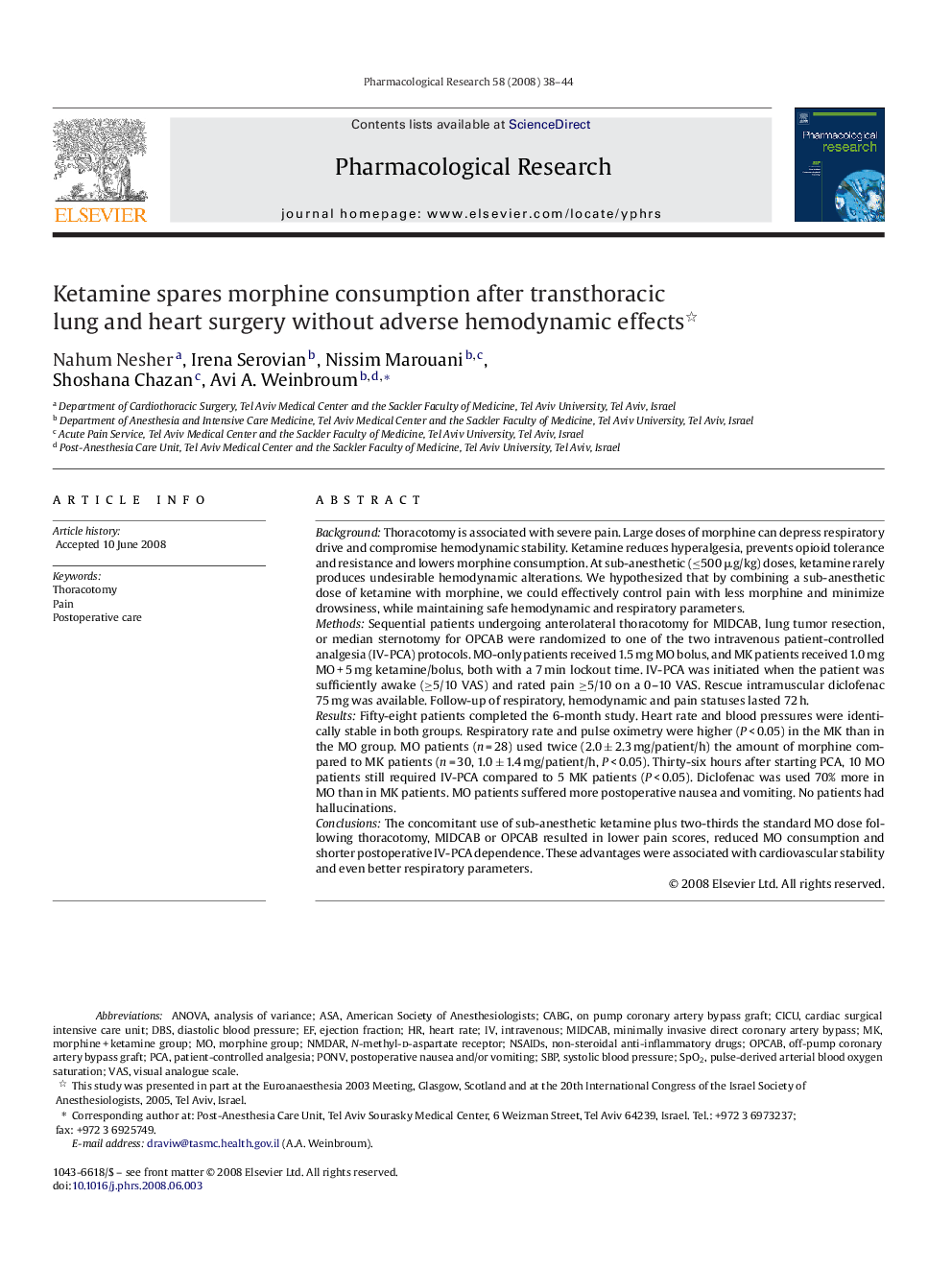| Article ID | Journal | Published Year | Pages | File Type |
|---|---|---|---|---|
| 2561499 | Pharmacological Research | 2008 | 7 Pages |
BackgroundThoracotomy is associated with severe pain. Large doses of morphine can depress respiratory drive and compromise hemodynamic stability. Ketamine reduces hyperalgesia, prevents opioid tolerance and resistance and lowers morphine consumption. At sub-anesthetic (≤500 μg/kg) doses, ketamine rarely produces undesirable hemodynamic alterations. We hypothesized that by combining a sub-anesthetic dose of ketamine with morphine, we could effectively control pain with less morphine and minimize drowsiness, while maintaining safe hemodynamic and respiratory parameters.MethodsSequential patients undergoing anterolateral thoracotomy for MIDCAB, lung tumor resection, or median sternotomy for OPCAB were randomized to one of the two intravenous patient-controlled analgesia (IV-PCA) protocols. MO-only patients received 1.5 mg MO bolus, and MK patients received 1.0 mg MO + 5 mg ketamine/bolus, both with a 7 min lockout time. IV-PCA was initiated when the patient was sufficiently awake (≥5/10 VAS) and rated pain ≥5/10 on a 0–10 VAS. Rescue intramuscular diclofenac 75 mg was available. Follow-up of respiratory, hemodynamic and pain statuses lasted 72 h.ResultsFifty-eight patients completed the 6-month study. Heart rate and blood pressures were identically stable in both groups. Respiratory rate and pulse oximetry were higher (P < 0.05) in the MK than in the MO group. MO patients (n = 28) used twice (2.0 ± 2.3 mg/patient/h) the amount of morphine compared to MK patients (n = 30, 1.0 ± 1.4 mg/patient/h, P < 0.05). Thirty-six hours after starting PCA, 10 MO patients still required IV-PCA compared to 5 MK patients (P < 0.05). Diclofenac was used 70% more in MO than in MK patients. MO patients suffered more postoperative nausea and vomiting. No patients had hallucinations.ConclusionsThe concomitant use of sub-anesthetic ketamine plus two-thirds the standard MO dose following thoracotomy, MIDCAB or OPCAB resulted in lower pain scores, reduced MO consumption and shorter postoperative IV-PCA dependence. These advantages were associated with cardiovascular stability and even better respiratory parameters.
